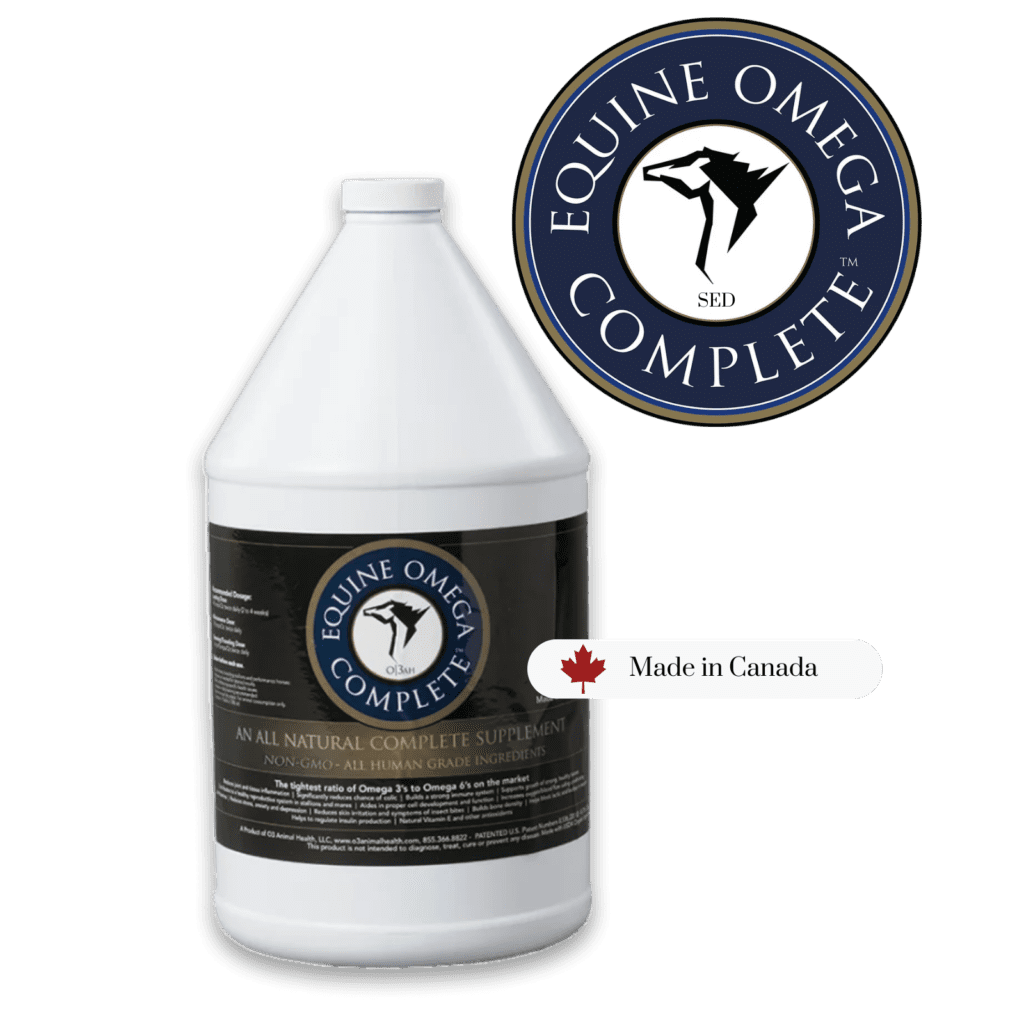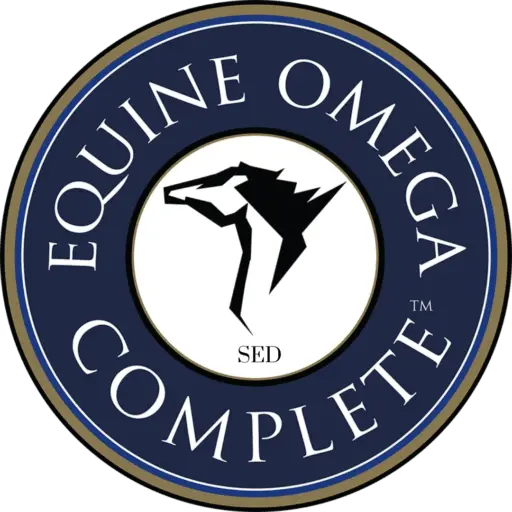We spend time, energy and money researching and selecting the supplement to properly support our horse’s health in all the right ways. Whether we’re looking for a supplement to address a specific health issue or want to support their overall health, it’s important to understand how the ingredients contribute to this.
Understanding nutrients like omega-3 fatty acids, EPA (eicosapentaenoic acid), DHA (docosahexaenoic acid) and ALA (alpha-linolenic acid) help horse owners determine if the products that they are currently using are targeting and reducing the effects of specific issues or contributing to overall health – or if they should be replaced with something better.

Equine Omega Complete®
This blend of DHA and EPA essential omega fats and natural antioxidants supports inflammatory response, performance recovery, insulin regulation, and weight management while ensuring strong hooves and a radiant coat. Equine Omega Complete® is a unique blend of organic soybean oil, wild-caught fish oil and all-natural vitamin E.
Where Do Omega-3 and Omega-6 Come From?
Omega-3s come from different sources:
Alpha-linolenic acid (ALA) is commonly found in vegetable oils such as flaxseed, flaxseed oils, chia seeds, leafy green vegetables, pasture, and hay.
Eicosapentaenoic acid (EPA) and docosahexanoeic acid (DHA) are found in fish, algae, and seaweed.
The omega-3 family includes short-chain alpha-linolenic acid (derived from plants) and long-chain eicosapentaenoic acid (EPA) and docosahexaenoic acid (DHA) from fish oil.
ALA is the only form of omega- 3 present in a horse’s natural diet; omega-6 fatty acids predominantly come from products such as corn, canola, safflower, sunflower, and soybean oils.
How Do They Work Together?
Omega-3s are an important element of all cell membranes, and their primary purpose is to produce eicosanoids (which block or initiate an inflammatory response), prostaglandins (which smooth muscle contraction and inflammation), and thromboxanes (which help form blood clots).
Omega-3s are also important in maintaining cell membrane structure and function, as well as central nervous system development, and immune function, and support fertility in both mares and stallions. As a team, the proper ratio of omega-3 and omega-6 fatty acids supports pro-inflammatory and anti-inflammatory arbitrators.
Inflammation is natural and the body’s first line of defence against injury, infections and toxins. In this distressed state, cells release chemicals to alert the immune system that help is required. If an ongoing signal continues due to unresolved inflammation, research has shown that major health concerns can arise, such as laminitis, obesity and insulin resistance, asthma, allergies, and arthritis.
A proactive way to promote health and long-term wellness is by supplementing omega-3 fatty acids, such as those found in Equine Omega Complete®.
What Are the Benefits?
Studies have revealed numerous benefits from adding omega-3 fatty acids, DHA, and EPA, including cardiovascular health, anti-inflammatory support, brain and nerve function, improved heart rate and recovery time, respiratory health, and fertility support (ovaries and semen) in both mares and stallions.
Understanding ingredients, and how they provide health support and work together with other elements provides us with the correct information to make informed decisions around horse health and wellness.





